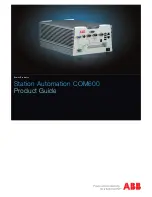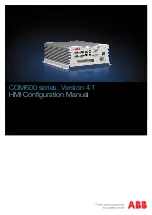
L-Proxy User Manual
68
LOYTEC
Version 3.1
LOYTEC electronics GmbH
Using the context menu on a folder, sub-folders may be created to organize the available
objects. If new objects are created automatically, they are usually placed in the base folder
and can then be moved by the user to any of his sub-folders. Note, that the folder structure
described above cannot be changed by adding or deleting folders at that level.
7.2.2 Data Point List
At the top right, a list of all data objects which are available in the selected folder is shown.
From this list, objects may be selected (including multi-select) in order to modify some of
their properties.
The list can be sorted by clicking on one of the column headers. For example, clicking on
the
Direction
column header will sort the list by direction. Other columns display data
point name, NV name, and SNVT.
New objects may be created in the selected folder by pressing the
New
button to the right
of the list or via the
New
command in the context menu. A plus
sign in the list indicates
that the data point contains sub-points. These can be structure members for structured
SNVTs. Clicking on the plus
sign expands the view.
7.2.3 Property View
When one or multiple data points are selected, the available properties are displayed in the
property view. Properties which are read-only are marked with a lock sign. When
applying multi-select, only those properties common to all selected data points are
displayed. Depending on the network technology and data point class, different properties
may exist.
Data point properties common to all technologies:
•
Datapoint Name
: This is the technology-independent data point name. This name may
be longer than and different to the name of the native communication object (i.e.,
network variable). Data point names must be unique within a given folder. The
maximum length is limited to 64 ASCII characters.
•
Datapoint Path
: This informational property specifies the entire path of the data point
within the data point hierarchy. The maximum length is limited to 64 ASCII
characters.
•
Datapoint Description
: This is a human-readable description of the data point. There
are no special restrictions for a description.
•
Use Pollcycle value as
: For input data points, this property defines whether the input
shall use a receive timeout or be constantly polling. See Section 6.3.2.
•
Poll on Startup
: For input data points this property defines, whether the data point
shall be polled once at start-up. Poll-on-startup can be enabled independently of the
pollcycle. See Section 6.3.2.
•
Pollcycle
: For input data points, this property defines the pollcycle in seconds. Set this
property to 0 to disable polling. See Section 6.3.2.
•
Receive Timeout
: For input data points, this property defines the receive timeout in
seconds. Set this property to 0 to disable polling. See Section 6.3.2.
•
Min Send
: For output data points, this property defines the min send time in seconds.
See Section 6.3.2.
•
Max Send
: For output data points, this property defines the max send time in seconds.
See Section 6.3.2.
•
Max Cache Age
: For output data points, this property defines the maximum cache age
for poll requests. See Section 6.3.2.
Summary of Contents for L-Proxy
Page 1: ...L Proxy CEA 709 Gateway User Manual LOYTEC electronics GmbH ...
Page 10: ......
















































